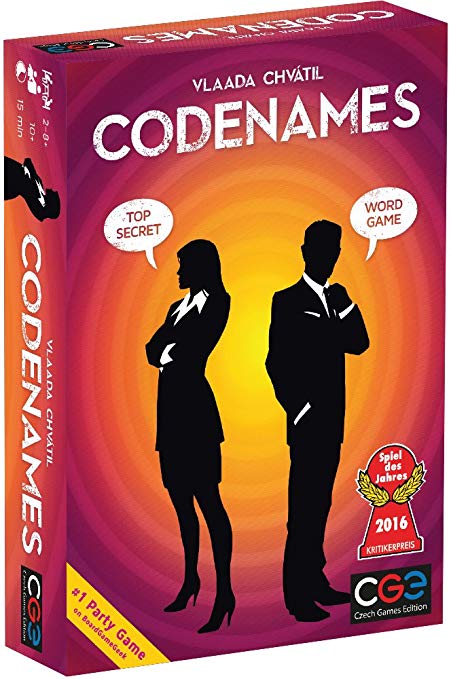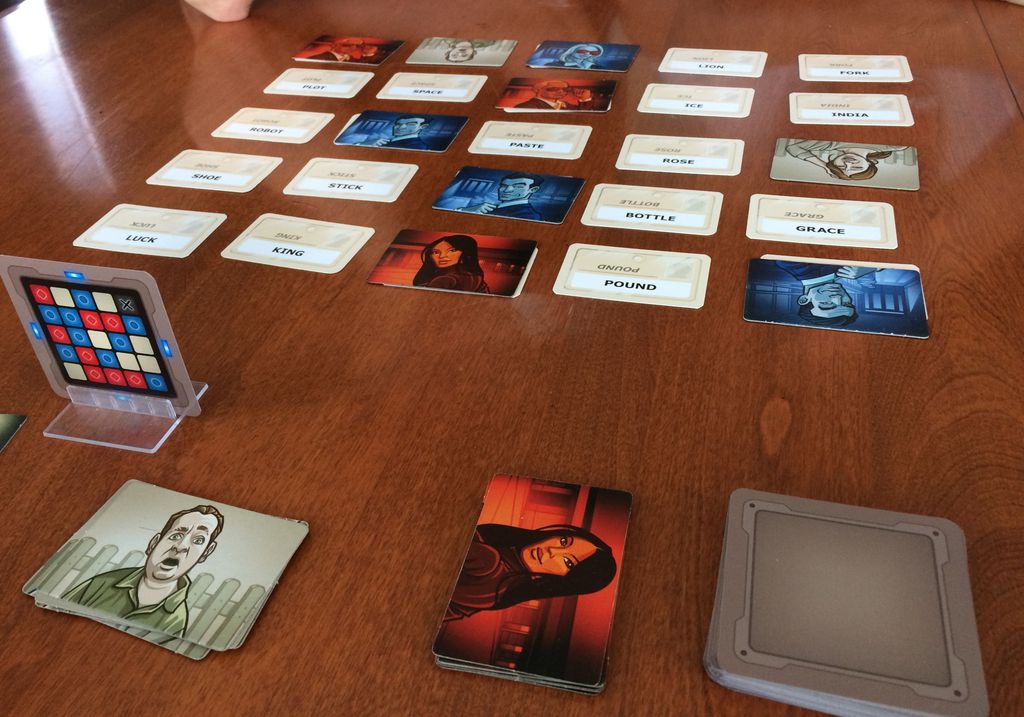Pay with


Overview:
Codenames is a game of word association and thinking outside the box. The multi-award winning game from Vlaada Chvátil has become one of the most popular group games around for a variety of reasons, due mostly to the fact that it’s quick and casual, it provides a superb amount of replayability, and it promotes creativity and social interaction. It’s also a great way to exercise your mind and push those language skills, and it plays well for both small groups and large parties alike. Most of all, it’s just fun. Whether you’re winning or losing, you’ll usually find something to laugh at – the ways in which the minds of your teammates work differently to yours will never cease to amaze you!

How to play:
Set up 25 word cards on a table visible to everyone playing. These represent agents in the world and their codenames. Split into two teams and decide on a spymaster for each team. The two rival spymasters know the secret identities (whether they are team red or team blue) of the agents, by looking at a secret key which only they can see. The two spymasters should sit at the same end of the table and agree on the correct orientation of this key, relative to the cards in front of them on the table. Work out which team – red or blue – goes first by looking at the highlighted bars around the edge of the spymaster’s key, and assign the double agent to this team – this is a special card which can function as either one additional blue card or one additional red; a small disadvantage given to the team which got to go first!
The Spymasters then take it in turns to give their respective teammates a clue which will lead them to one of their team’s agents. A spymaster is only allowed to say two things: a one-word clue whose meaning relates to words on the table, and a number, which tells his or her team how many codenames that clue relates to. Strong word association skills (and an understanding of how your friends think!) are necessary if you want to come out on top! After being given a clue, the spymaster’s team may make a guess. You fully commit to a guess by placing a finger on the word you have chosen, and the spymaster puts out a character tile (e.g. a red or blue agent) on the word to indicate whether or not the guess was right. So long as they guess correctly, the team may continue to make a number of guesses equal to the number the spymaster gave in the original clue, plus one. You could use this “bonus guess” to catch up to the opposing team by making a guess on a clue you guessed incorrectly in a previous turn. However, if you make an incorrect guess, your turn ends immediately and the next team gets to go. Sometimes when you guess wrong, a colourless civilian card comes out rather than an agent, which isn’t too bad, but sometimes you could get an agent for the opposing team’s colour! Think carefully whether you want to use all your guesses; so long as you’ve made at least one guess, you’re allowed to pass.
And finally, make sure you don’t accidentally guess the assassin. That’s like potting the black prematurely in pool – instant loss! Spymasters need to think carefully whether or not their clue could inadvertently lead to an assassin guess before giving that clue. The game ends when one team successfully finds every agent of their colour!